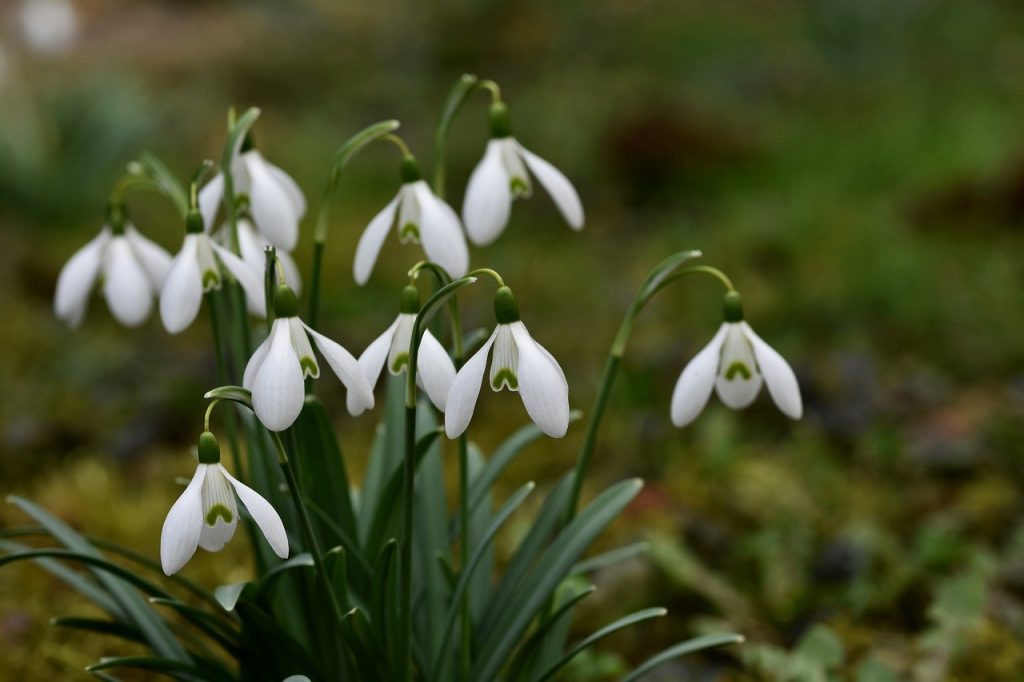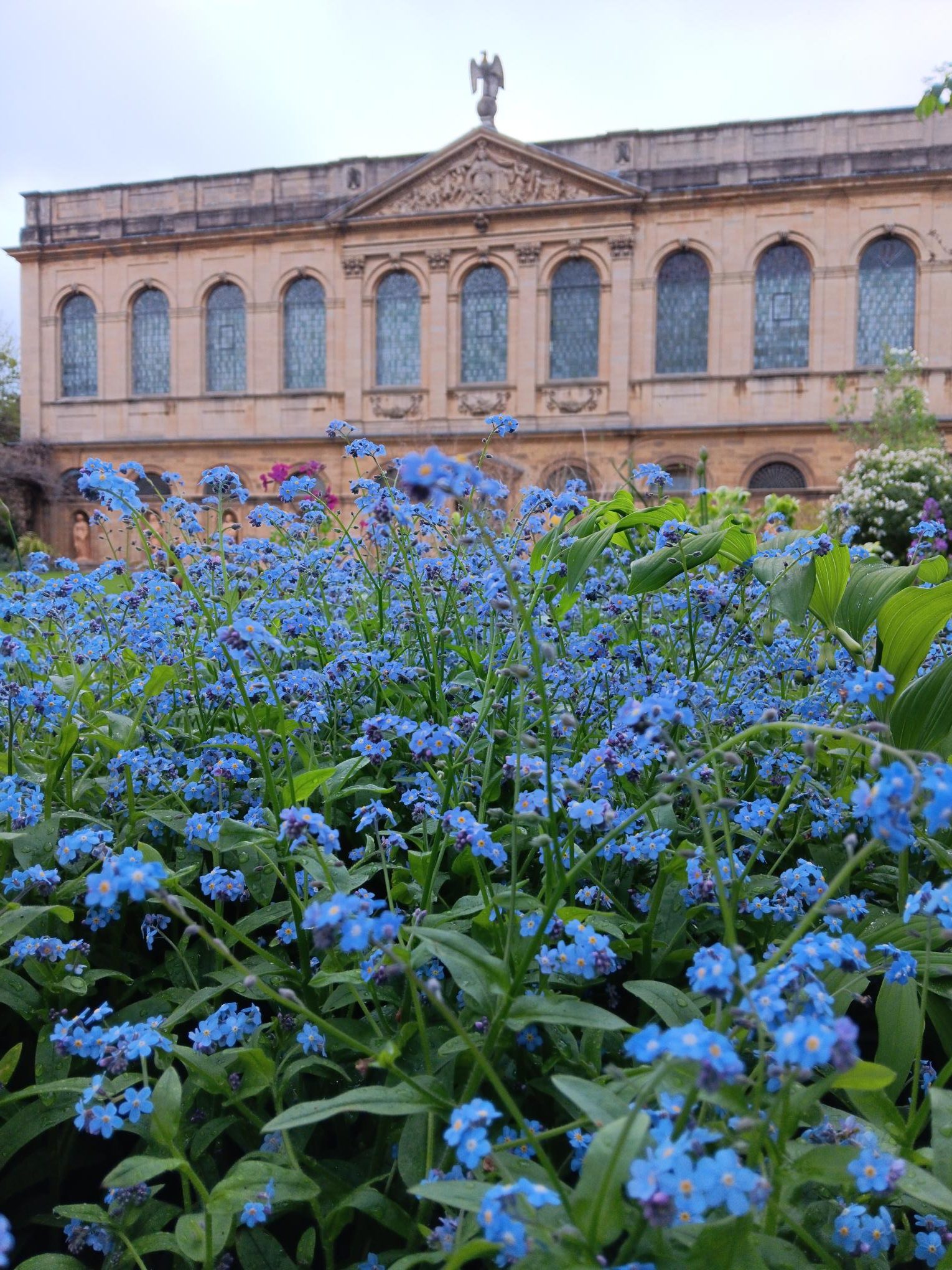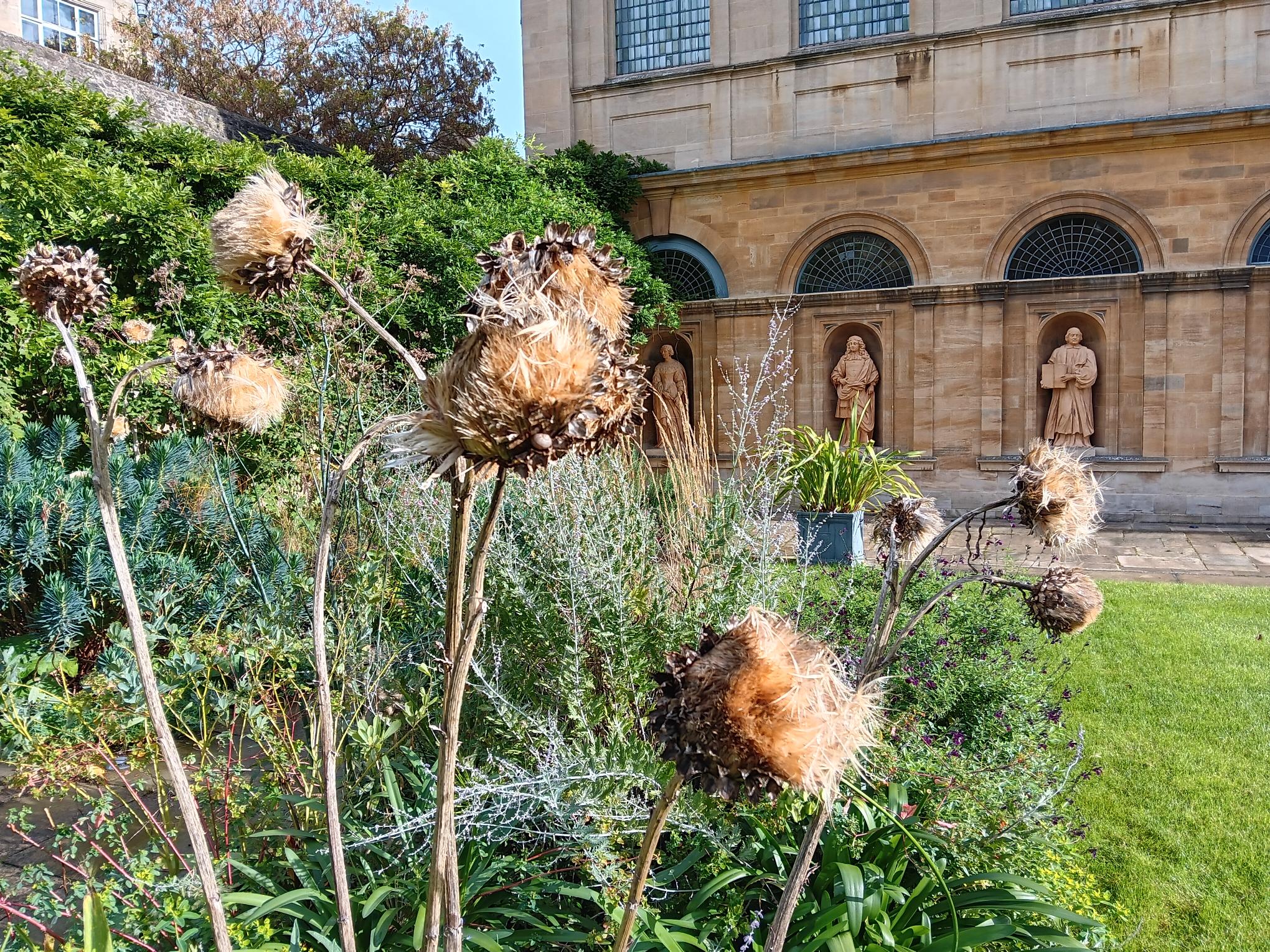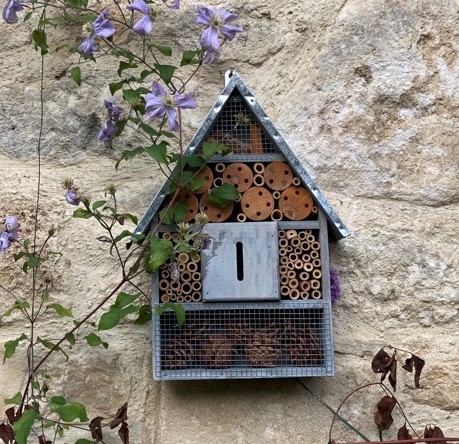Snowdrop Season!
Well, despite being in the depths of winter still, the nights are starting to draw out again, and another sign that we are headed towards spring is the first brave little bulbs beginning to flower.
At Queen’s, the earliest bulbs are the Winter Aconite, Eranthis hyemalis, with cheerful, sunny-yellow flowers similar to a buttercup, plus snowdrops, with delicate, pendulous, white flowers. Both will, in time, form thick carpets, with the latter visually making up for a lack of its namesake (with only one, short, snow-shower so far this winter at Queen’s).
While we don’t have as many snowdrops here as they do at Worcester College, who have an impressive collection (before my time they donated some to Queen’s), we do have at least nine types of snowdrop, botanically referred to as ‘Galanthus’, from the Greek word for Milk Flower, in the College grounds. The most majestic of these is a popular cultivar called ‘Magnet’. This one is relatively easy to identify as it stands head and shoulders above the other ones that grow here.
I hope to add more to this collection over the next few years, and while most people buy and plant dry bulbs in the autumn (especially of the species Galanthus nivalis, which is the one most commonly found in gardens), there is a resurgence of people buying snowdrops ‘in the green’ when the plant is in full growth, and even in flower, but not always in a pot. Therefore, now is the perfect time to get some new plants, either by mail order or at a rare plant fair. There are several specialist nurseries and if you are surprised at there being enough plants, and enough money to be made from this humble bulb to support those businesses, then you may be interested to read that there are over 19 different species of Galanthus, and 1,000 plus cultivars, with new hybrids being continually added as people breed new ones, and the occurrence of natural crosses.
These hybrids are eagerly bought by people who have fallen deeply in love with the charm of snowdrops and call themselves Galanthophiles. They are willing to pay staggering amounts for a single bulb of new hybrids that have some unusual feature, especially those that have a yellow (normally referred to as golden) colouration where green would normally be found. So far, the most expensive snowdrop in the world is a cultivar called Galanthus plicatus (‘Golden Tears’), which was sold for £1,850 in 2022.
While I don’t have specialist knowledge of real Galanthophiles, and do not intend to spend thousands of pounds, I do have a great fondness for this plant and get excited by the vast array of different varieties, particularly those with unusual green (or yellow) patterns on inner, or even outer, petals.
For those who are happy to gaze from afar, rather than get up close and personal with their plants, there are still benefits to be had from choosing a few cultivars that are different from the diminutive Galanthus nivalis, as other species and their cultivars flower at other times, (though still when the garden is relatively barren and benefiting from snowdrops coming out). It is possible to have snowdrops from September to April, weather permitting, so if they do well in your garden and you want some more flowers in winter try some of the less common species and cultivars. I intend to get some that will flower earlier, such as cultivars of Galanthus reginae-olgae, and later than those in our current collection to extend the season.
And lastly, for those who don’t see value in these little beauties, they contain an alkaloid called galantamine, that despite being poisonous has been found to help treat dementia, so, for me, this makes snowdrops worth treasuring.



